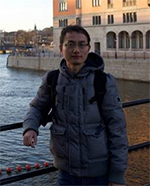Instructors/Speakers
Dr. Tao XU
Post-Doctoral Fellow
Faculty of Engineering and Architecture
Ghent University
Belgium
Abstract
The Tunnel Boring Machine (TBM) tunneling technique has been developed to construct tunnels that require strict settlement control, for example, in urban areas with a large amount of buildings, historic areas etc. When tunneling with a TBM in saturated sand, groundwater flow into the excavation face needs to be impeded. Both stability of the tunnel face and limitation of the groundwater flow are achieved by pressurizing the drilling fluid at the tunnel face. Due to the pressure difference between the excavation chamber of the TBM and the ground, drilling fluid (slurry or foam) will infiltrate into the ground and thus there will be a flow in front of the tunnel face. In such a situation, part of support pressure applied through the drilling fluid at the tunnel face will be transferred into excess pore water pressure in the ground. As a result, the effective support pressure at the tunnel face and thus the stability of tunnel face will be reduced. The reduction of the effective support pressure depends on the infiltration distance, the infiltration velocity and the drilling speed. However, the infiltration distance of the foam or the slurry, influence of this infiltration on the permeability of the infiltrated ground, and consequently on the excess pore water pressure, are still only partly understood. Finding answers to these questions, therefore, is significantly important for the safety of tunnel.
The purpose of this study is to improve our understanding of the mechanism of drilling fluid infiltration in front of the tunnel face through laboratory experiments, and develop computational models considering such an infiltration process to predict the excess pore water pressures induced by TBM tunneling. The research concerns both slurry and Earth Pressure Balance shields (EPB shields). With the results of the experiments, a sounder theoretical basis for the description of infiltration of drilling fluid (slurry or foam), and the computation of excess pore water pressure in front of tunnel face have been established.
Biography



